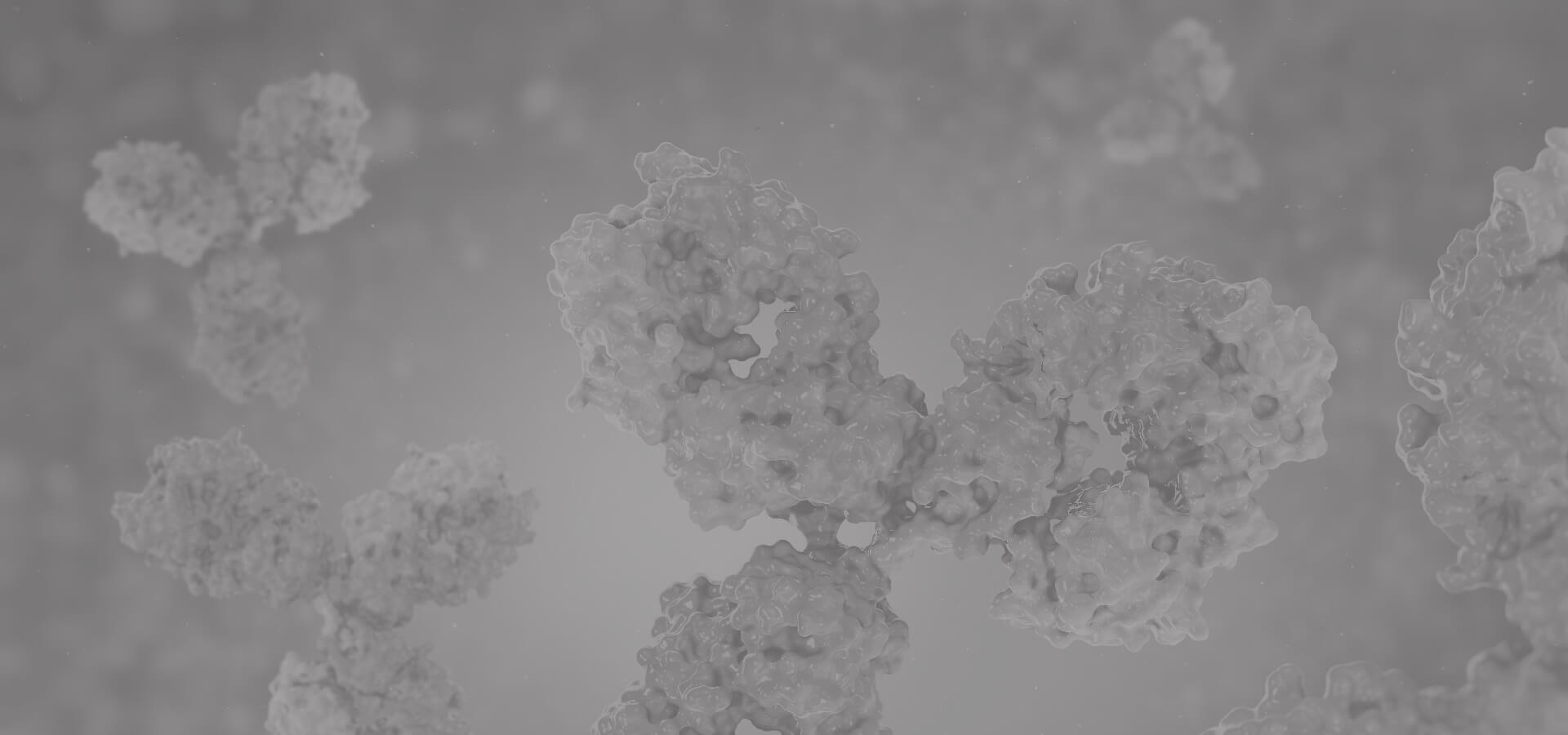DHH
This gene encodes a member of the Hedgehog family. The hedgehog gene family encodes signaling molecules that play an important role in regulating morphogenesis. This protein is predicted to be made as a precursor that is autocatalytically cleaved; the N-terminal portion is soluble and contains the signalling activity while the C-terminal portion is involved in precursor processing. More importantly, the C-terminal product covalently attaches a cholesterol moiety to the N-terminal product, restricting the N-terminal product to the cell surface and preventing it from freely diffusing throughout the organism. Defects in this protein have been associated with partial gonadal dysgenesis (PGD) accompanied by minifascicular polyneuropathy. This protein may be involved in both male gonadal differentiation and perineurial development. [provided by RefSeq]
Full Name
desert hedgehog homolog (Drosophila)
Function
Intercellular signal essential for a variety of patterning events during development. May function as a spermatocyte survival factor in the testes. Essential for testes development.
Biological Process
Cell-cell signaling Source: InterPro
Cell fate specification Source: GO_Central
Leydig cell differentiation Source: Ensembl
Male sex determination Source: Ensembl
Myelination Source: Ensembl
Osteoblast differentiation Source: Ensembl
Protein autoprocessing Source: InterPro
Regulation of gene expression Source: GO_Central
Regulation of steroid biosynthetic process Source: Ensembl
Response to estradiol Source: Ensembl
Response to estrogen Source: Ensembl
Smoothened signaling pathway Source: GO_Central
Spermatid development Source: Ensembl
Cell fate specification Source: GO_Central
Leydig cell differentiation Source: Ensembl
Male sex determination Source: Ensembl
Myelination Source: Ensembl
Osteoblast differentiation Source: Ensembl
Protein autoprocessing Source: InterPro
Regulation of gene expression Source: GO_Central
Regulation of steroid biosynthetic process Source: Ensembl
Response to estradiol Source: Ensembl
Response to estrogen Source: Ensembl
Smoothened signaling pathway Source: GO_Central
Spermatid development Source: Ensembl
Cellular Location
Desert hedgehog protein N-product: Cell membrane. The N-terminal peptide remains associated with the cell surface.
Desert hedgehog protein C-product: Extracellular space. The C-terminal peptide diffuses from the cell.
Desert hedgehog protein C-product: Extracellular space. The C-terminal peptide diffuses from the cell.
Involvement in disease
Partial gonadal dysgenesis with minifascicular neuropathy 46,XY (PGD):
Characterized by the presence of a testis on one side and a streak or an absent gonad at the other, persistence of Muellerian duct structures, and a variable degree of genital ambiguity.
46,XY sex reversal 7 (SRXY7):
A disorder of sex development. Affected individuals have a 46,XY karyotype but present as phenotypically normal females. SRXY7 patients have no functional gonads.
Characterized by the presence of a testis on one side and a streak or an absent gonad at the other, persistence of Muellerian duct structures, and a variable degree of genital ambiguity.
46,XY sex reversal 7 (SRXY7):
A disorder of sex development. Affected individuals have a 46,XY karyotype but present as phenotypically normal females. SRXY7 patients have no functional gonads.
PTM
The C-terminal domain displays an autoproteolysis activity and a cholesterol transferase activity. Both activities result in the cleavage of the full-length protein and covalent attachment of a cholesterol moiety to the C-terminal of the newly generated N-terminal fragment (N-product). This covalent modification appears to play an essential role in restricting the spatial distribution of the protein activity to the cell surface. The N-product is the active species in both local and long-range signaling, whereas the C-product has no signaling activity (By similarity).
View more
Anti-DHH antibodies
+ Filters
 Loading...
Loading...
Target: DHH
Host: Mouse
Antibody Isotype: IgG2b, κ
Specificity: Human, Mouse, Rat
Clone: D0830
Application*: WB, IP, IF, E
Target: DHH
Host: Mouse
Antibody Isotype: IgG2a, κ
Specificity: Human, Mouse, Rat
Clone: D0827
Application*: WB, IP, IF, E
Target: DHH
Host: Mouse
Antibody Isotype: IgG1, κ
Specificity: Human, Mouse, Rat
Clone: A2206
Application*: WB, IP, IF, E
Target: DHH
Host: Mouse
Antibody Isotype: IgG2a, κ
Specificity: Human, Mouse, Rat
Clone: 6A12
Application*: WB, IP, IF, E
Target: DHH
Host: Mouse
Antibody Isotype: IgG2a, κ
Specificity: Human, Mouse, Rat
Clone: D0831
Application*: WB, IP, IF, E
More Infomation
Hot products 
-
Mouse Anti-AZGP1 Recombinant Antibody (CBWJZ-007) (CBMAB-Z0012-WJ)

-
Rabbit Anti-Acetyl-Histone H4 (Lys16) Recombinant Antibody (V2-623415) (CBMAB-CP1021-LY)

-
Mouse Anti-DLL4 Recombinant Antibody (D1090) (CBMAB-D1090-YC)

-
Mouse Anti-ACVR1C Recombinant Antibody (V2-179685) (CBMAB-A1041-YC)

-
Mouse Anti-CDK7 Recombinant Antibody (CBYY-C1783) (CBMAB-C3221-YY)

-
Mouse Anti-CD2AP Recombinant Antibody (BR083) (CBMAB-BR083LY)

-
Mouse Anti-BIRC3 Recombinant Antibody (315304) (CBMAB-1214-CN)

-
Mouse Anti-ALB Recombinant Antibody (V2-363290) (CBMAB-S0173-CQ)

-
Mouse Anti-BPGM Recombinant Antibody (CBYY-1806) (CBMAB-2155-YY)

-
Rat Anti-CD63 Recombinant Antibody (7G4.2E8) (CBMAB-C8725-LY)

-
Mouse Anti-ACKR3 Recombinant Antibody (V2-261265) (CBMAB-C1023-LY)

-
Rat Anti-ADAM10 Recombinant Antibody (V2-179741) (CBMAB-A1103-YC)

-
Mouse Anti-CASP8 Recombinant Antibody (CBYY-C0987) (CBMAB-C2424-YY)

-
Mouse Anti-CD1C Recombinant Antibody (L161) (CBMAB-C2173-CQ)

-
Mouse Anti-EIF4G1 Recombinant Antibody (2A9) (CBMAB-A2544-LY)

-
Mouse Anti-ANXA7 Recombinant Antibody (A-1) (CBMAB-A2941-YC)

-
Mouse Anti-ATP1A2 Recombinant Antibody (M7-PB-E9) (CBMAB-A4013-YC)

-
Mouse Anti-AOC3 Recombinant Antibody (CBYY-0014) (CBMAB-0014-YY)

-
Rabbit Anti-AKT3 Recombinant Antibody (V2-12567) (CBMAB-1057-CN)

-
Mouse Anti-AKT1 Recombinant Antibody (V2-180546) (CBMAB-A2070-YC)

For Research Use Only. Not For Clinical Use.
(P): Predicted
* Abbreviations
- AActivation
- AGAgonist
- APApoptosis
- BBlocking
- BABioassay
- BIBioimaging
- CImmunohistochemistry-Frozen Sections
- CIChromatin Immunoprecipitation
- CTCytotoxicity
- CSCostimulation
- DDepletion
- DBDot Blot
- EELISA
- ECELISA(Cap)
- EDELISA(Det)
- ESELISpot
- EMElectron Microscopy
- FFlow Cytometry
- FNFunction Assay
- GSGel Supershift
- IInhibition
- IAEnzyme Immunoassay
- ICImmunocytochemistry
- IDImmunodiffusion
- IEImmunoelectrophoresis
- IFImmunofluorescence
- IGImmunochromatography
- IHImmunohistochemistry
- IMImmunomicroscopy
- IOImmunoassay
- IPImmunoprecipitation
- ISIntracellular Staining for Flow Cytometry
- LALuminex Assay
- LFLateral Flow Immunoassay
- MMicroarray
- MCMass Cytometry/CyTOF
- MDMeDIP
- MSElectrophoretic Mobility Shift Assay
- NNeutralization
- PImmunohistologyp-Paraffin Sections
- PAPeptide Array
- PEPeptide ELISA
- PLProximity Ligation Assay
- RRadioimmunoassay
- SStimulation
- SESandwich ELISA
- SHIn situ hybridization
- TCTissue Culture
- WBWestern Blot

Online Inquiry





